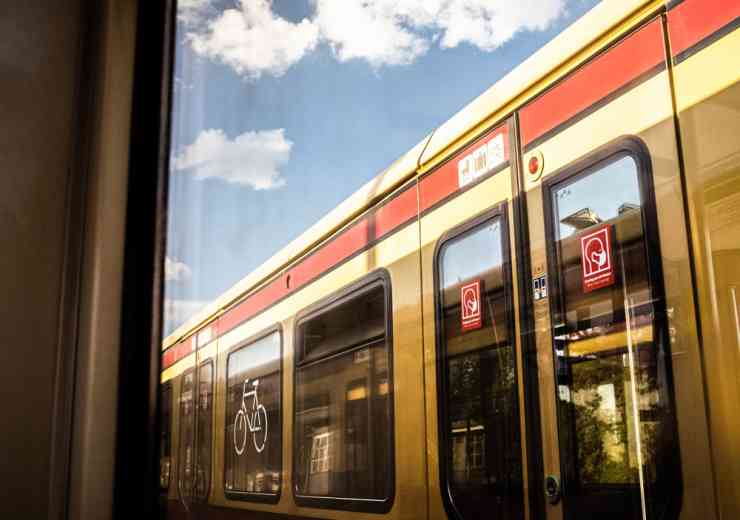
Detecting and deterring crime on the rail network
Identifying and preventing criminal activity on British railway lines relies on more than just vigilance. The British Transport Police discusses Project Servator, a new approach to deploying officers to detect crime and deter terrorism.
‘We love rush hour – it gives us 300,000 extra pairs of eyes’. That is the message from British Transport Police (BTP), which is using innovative tactics, labelled Project Servator, to deter, detect and disrupt crime on the rail network. Project Servator deployments are highly visible police patrols designed to identify and prevent a range of criminal activity, from pickpocketing and theft to more serious crimes, including terrorism.
They involve both uniformed and plain‑clothed officers trained to detect suspicious activity, supported by other resources, such as armed officers, police dogs, a network of CCTV cameras, and the thousands of rail staff and the community that BTP works alongside.
Officers work with rail staff and retailers based at railway stations to develop a network of vigilance. The aim is to empower them to support the police in keeping the railway safe and secure.
Alun Thomas, temporary assistant chief constable, said: “Working together to create a network of vigilance is the key to making Project Servator a success. Rail staff and people who work at stations are so crucial in the fight against crime because they are our eyes and ears on the network. They know their environment better than anybody, so they will know if something is out of place or doesn’t feel right.”
Lord Tariq Ahmad, Transport Minister, agrees. He said: “Our foremost priority is the safety of the British public. British Transport Police and railway staff play a vital role in preventing criminal activity on the network and it is important we work together to ensure security measures across the network are up to date.”
Reassuring the public
Rail staff and retailers also play an important role in helping to let the public know what is being done to make sure they get home safe, secure and on time every day. BTP officers carrying out Project Servator deployments also spend time talking to the travelling public. These officers inform and reassure the public about their activities and explain how they can help the police and become part of the network of vigilance, by reporting unattended items or suspicious behaviour.
Alongside this face to face engagement, BTP displays posters and leaflets in train stations and coffee bars and retailers at the stations, and audio announcements are made to help explain what they are doing.
Using the tagline ‘Together we’ve got it covered’, the posters feature BTP personnel, including Malinois and Spaniels from the dog unit, and members of the public. One of the adverts plays on the partnership between the public and the police, with its headline “We love rush hour, it gives us 300,000 extra pairs of eyes.”
The patrols were met with a positive response from members of the public who were surveyed during test deployments at Waterloo, Euston and Paddington stations in London in September 2015. The research showed that the majority were reassured by Project Servator deployments and that they also appeared to be prepared to be part of a network of vigilance, with 64 per cent and 66 per cent saying they would be more likely to report unattended items and suspicious behaviour respectively.
A communications success
Project Servator was first introduced by City of London Police, which adopted the collaborative community approach in early 2014, aimed at further protecting the City and reinforcing the existing ‘ring of steel’. It was also used during the XX Commonwealth Games in Glasgow by Police Scotland and partners in the summer of 2014, to build on and complement the Games’ safety and security plans. BTP has worked with both forces to carry out joint deployments covering railway stations and city centres and continues to do so.
All three forces’ approaches have been evaluated, with 2,600 interviews conducted with members of the public to gauge their reaction to the deployments. This broader body of research has found that the public find the communications used as part of Project Servator to be reassuring, particularly when they experience increasing numbers and forms of communications, for example being spoken to by a police officer and seeing a poster.
Professor Paul Baines, professor of Political Marketing at Cranfield University, who has researched the impact of Project Servator and similar approaches, explains: “The public should not fear for their safety because security measures are in place to protect them. They should in fact feel reassured. But criminals should be fearful as they are the target of Project Servator. The message for this group is received differently, namely to be fearful that they could be detected and arrested because of the security arrangements in place. This is compounded by the public’s response to the deployments and messaging, which is to be more likely to report suspicious activity.”
Alun Thomas explains what people can expect to see at stations: “This could mean you see a highly visible presence of officers at your station more often. We will turn up unannounced to carry out patrols. They could happen at any time, last for different amounts of time and involve varying numbers of officers and resources. The key to deterring, detecting and disrupting crime on the network is making our deployments unpredictable.
“Don’t be surprised or alarmed if you see a Project Servator deployment being carried out at your station. Our officers are there to keep you safe. You can play a vital role by being vigilant when you are travelling and reporting anything that doesn’t feel right, for example an unattended item or someone acting suspiciously. Don’t leave it to someone else to report it.”
Has the use of Servator changed?
The use of Project Servator has not changed by any significance in the six months since BTP introduced the project. We are very conscious that every time the teams deploy they deliver the maximum impact. There have been some minor changes around the look and feel of the deployments. The use of other assets from Specialist Operations such as firearms, dogs and the specialist response unit enables us to provide a layered approach to the policing activity.
Since December a concerted effort has been made to promote Servator within the policing hubs at the main stations and to the station staff and retailers. Servator presentations have been and will continue to be delivered to partners and key stakeholders. The ultimate objective is to promote Servator and its objectives throughout the communities we police.
Initially BTP employed Servator tactics in London and Birmingham. There have been a number of Servator deployments at other stations in England, Scotland and Wales. The Servator team sits centrally within the Specialist Operations department and has a national remit. By geography alone, the London locations will get a larger proportion of Servator activity because of where the teams are based but the expansion of the Servator capability across the Force is ongoing in terms of awareness and ability.
Have recent attacks had an impact on how Servator is being used?
Before Brussels we focused on reassurance and increased vigilance. And it remains that way. The key messages the teams deliver daily during any Servator deployment are reassurance, encouraging the reporting of anything an individual considers unusual or suspicious and deterring those intent on planning or carrying out criminality on the rail and underground network, essentially making it a hostile environment for the criminal to comfortably operate in.
What is important to note is the positive feedback the teams received back from passengers, public and staff immediately following the horrific events in Brussels. In the main, these individuals felt reassured by the increased presence of uniformed officers rather than anxious. The proactive engagement the officers have with people during a Servator deployment reduces that concern and anxiousness which, in turn, allows daily routines to continue uninterrupted.
The tactics used by the team are always being reviewed. The foundations and key messages that are expected to be delivered during a Servator deployment remain. We are always looking for opportunities to deliver the best product for the organisation, partners and customers. So the tactics will evolve. It is important to remember what worked well today may not work as well tomorrow.
Are other forces adopting it?
There are a number of other police forces currently considering adopting Project Servator in crowded places and at public events. Essex Police is considering using Servator at crowded sites, such as shopping centres and airports. Project Servator is also being adapted from open sites to closed ones, with the aim of enhancing and augmenting the effectiveness of existing protective security measures such as CCTV and security officers. Servator is currently being trialled by the Civil Nuclear Constabulary and by the Military Defence Police.
Further Information
www.btp.police.uk
digital issue




















